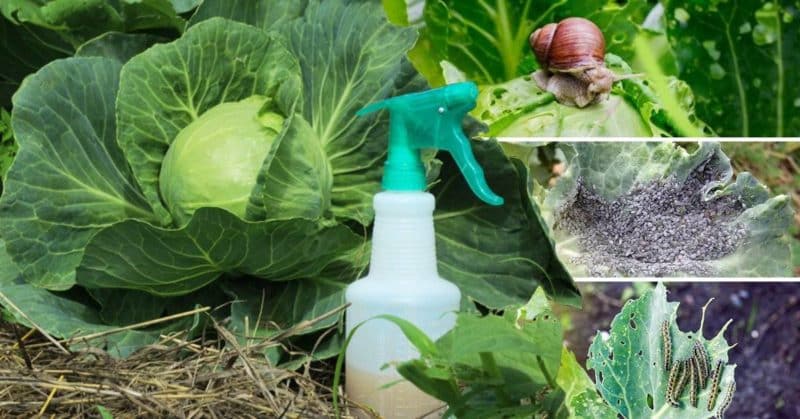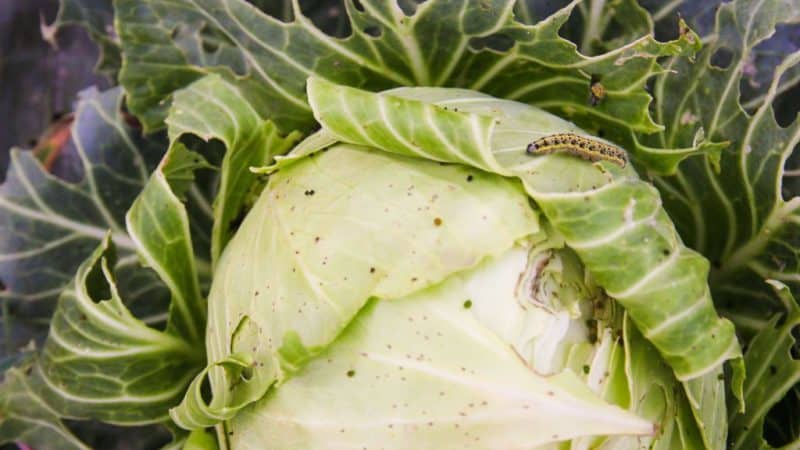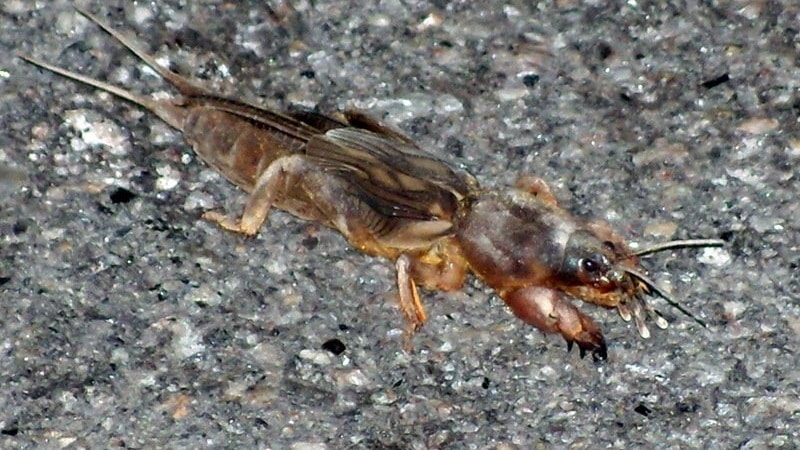How to dilute ammonia and treat cabbage with it against pests
Not only humans love cabbage, but also aphids, mole crickets, psyllids, butterflies, snails and slugs. Insects spoil the heads of cabbage, reducing the yield. For opponents of chemicals, products based on ammonia were invented. They are absolutely safe for humans, but pests are unlikely to like them. The main properties of the substance are repelling insects and saturating cabbage with nitrogen.
Is it possible to treat cabbage with ammonia?
Spraying heads of cabbage with ammonia is not only possible, but necessary.
The substance has some features:
- Saturates plants with nitrogen. Its deficiency results in the following problems: the leaves become faded, quickly dry out and stop growing, while the cabbage does not form a head of cabbage.
- Repels pests. Their larvae develop in the root zone of the bush. Timely use of tinctures based on ammonia will preserve the harvest.
The nitrogen in ammonia is absorbed by plants much faster than in standard organic fertilizers. But you shouldn’t overuse it, as it will have the opposite effect: cabbage will accumulate nitrates, which are dangerous to human health.
How to treat cabbage with ammonia against pests
A sad picture eaten by caterpillars Every gardener observes leaves. Mole crickets, slugs, aphids, whiteflies, cruciferous flea beetles, cutworms, and cabbage moth larvae do not disdain heads of cabbage.
Proper use of ammonia will help you cope with insects and prevent their reappearance.

What pests does it help with?
The substance effectively destroys white butterfly larvae, caterpillars, slugs, snails, aphids, mole crickets. After the first treatment, a small part of the larvae disappears, so the procedure is repeated.
The remaining pests cannot tolerate the strong smell of alcohol and leave the area. Gardeners manually collect large specimens that have escaped after the spraying procedure.
How to divorce
To feed cabbage with nitrogen, prepare a solution: 50 ml of alcohol is diluted in 5 liters of water.
Use according to the following instructions:
- carefully pour 300 ml under the root;
- the procedure is performed in the evening;
- re-process after 7 days.
4-5 feedings are enough for the entire growing season. Treatment is stopped after the complete disappearance of signs of nitrogen deficiency.
Ways to get rid of various pests:
- Recipe against slugs and snails. Peak pest activity occurs at night, so treatment is carried out in the evening. To prepare the solution, take 40 ml of alcohol and dilute it in 6 liters of water. Spray the lower part of the leaves, then pour 100 ml under each root. Repeat the procedure after 30 minutes. After pests appear on the ground, they are collected by hand and destroyed.

- From the caterpillars of the white butterfly. Dissolve 1 tbsp in 10 liters of water. l. vinegar and 50 ml of ammonia. Spray the plantings in the evening. Do not pour the composition onto the beds. Treatment is carried out 3-4 times throughout the season.

- From aphids. She prefers to eat leaves. Subsequently, they curl and dry out, and young plants die. Rub a bar of laundry soap, dissolve the shavings in 10 liters of warm water, add 3 tbsp. l.ammonia. The resulting mixture is sprayed onto the leaves. Repeat the procedure after 14 days, when new insects hatch.

- From the bear. A large insect damages roots and seedlings and causes the loss of a significant amount of harvest. To combat it, 10 ml of ammonia is dissolved in 10 liters of water. 500 ml is poured under each seedling. Repeat the treatment if the mole cricket is spotted again.
 Medvedka
Medvedka - From the psyllid. The pest sucks the juices out of the cabbage and damages the seedlings. Signs of insects are curled leaves. For prevention, a rope richly soaked in ammonia is pulled between the plants. If the heads of cabbage are damaged, prepare a mixture of 50 ml of alcohol and 10 liters of water. Spray the plantings and repeat the procedure after 7 days. Severely affected plants are destroyed.
The use of ammonia implies compliance with safety rules. Ammonia belongs to the group of toxic substances, so it is used with extreme caution.
Recommendations:
- Spray the plants in the morning or evening. During the day, the sun's rays will cause burns on the foliage. Before using ammonia, lightly moisten the soil.
- Be sure to respect the proportions. An excess of alcohol in mixtures will lead to the death of cabbage.
- Apply only to the back of the leaf and the root zone.
- Protect the respiratory tract with a respirator and hands with gloves. A toxic substance causes poisoning.
- Prepare solutions in the fresh air before treatment and use immediately.
- Do not water the cabbage with “fog” because the ammonia evaporates quickly. Use a watering can with a shower attachment.
- During pest control, fertilizing with nitrogen fertilizers is avoided, otherwise an excess of the microelement will cause undesirable consequences.
Some gardeners prefer to grow Chinese cabbage. Its tender leaves become dinner for the cruciferous flea beetle.
Get rid of the pest as follows:
- dissolve 2 tbsp in 10 liters of water. l. ammonia and 1/2 tbsp. liquid soap;
- spray leaves and soil;
- repeat the procedure if the fleas appear again.
Additionally, the mixture prevents the appearance of powdery mildew and fusarium.
Read also:
Early maturing cabbage hybrid Krautkaiser F1
Conclusion
Ammonia is an effective remedy against cabbage pests. Thanks to its pungent odor and unique properties, the product destroys insects and saturates the heads of cabbage with nitrogen. When preparing solutions, be sure to take into account the proportions and follow the instructions for use.